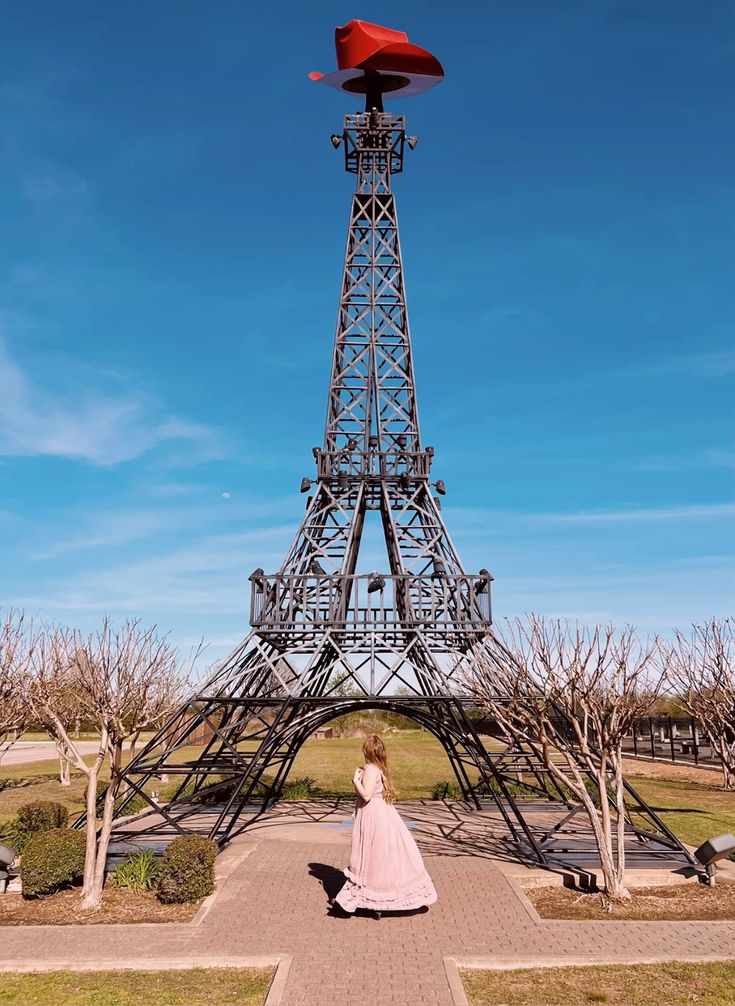Paris, Texas, USA: Discover the Hidden Gem in the Lone Star State
Nestled in the northeastern part of Texas, Paris, Texas, is a small city with a rich history, welcoming charm, and a sense of community that is hard to find in larger cities. Often overshadowed by its famous namesake in France, Paris, Texas, offers its own unique character, combining Southern hospitality, cultural heritage, and an abundance of natural beauty. Despite being a small town, it has a big heart and a place in the history of the state. Let’s take a closer look at the biography of Paris, Texas, its daily life, impacts, historical significance, and why this city is so important to both its residents and society at large.
A Glimpse into the History of Paris, Texas
Founded in 1839, Paris, Texas, has a rich and storied history that dates back to the days before Texas gained its independence from Mexico. Originally a trading post, it quickly grew into a thriving town due to its strategic location along important trade routes. Paris, Texas, became a regional hub for agriculture, trade, and transportation, attracting settlers from across the United States.
One of the defining moments in Paris’ history came in 1916 when the city’s iconic Eiffel Tower replica, adorned with a giant red cowboy hat, was erected as a promotional stunt. While it is a quirky nod to the French capital, this structure has since become one of the city’s most recognizable landmarks, adding to the local charm and appeal.
Over the years, Paris, Texas, has faced challenges, including economic downturns and natural disasters. However, the town has always demonstrated resilience and a spirit of unity, which has contributed to its sustained growth and development. Today, Paris is known for its friendly atmosphere, vibrant arts scene, and unique blend of small-town values and modern amenities.
Daily Life and Impact in Paris, Texas
In Paris, Texas, daily life is characterized by a close-knit community where people know their neighbors, and there’s a sense of belonging that’s hard to find in larger cities. The city’s residents enjoy a slower pace of life compared to big urban centers, with plenty of opportunities for outdoor activities, local events, and community gatherings.
The economy of Paris is primarily driven by agriculture, manufacturing, and healthcare, with a growing focus on tourism and the arts. Many residents work in local businesses or commute to nearby cities for employment. The healthcare sector plays an essential role in the community, with Paris Regional Medical Center being one of the largest employers in the area.
For families, daily life in Paris is often centered around community involvement, whether it’s attending the local farmers’ market, participating in one of the many festivals throughout the year, or enjoying the city’s parks and recreation facilities. Paris, Texas, also boasts a variety of schools, making it a family-friendly destination.
The city’s cultural scene, though small, is vibrant. From local art galleries to live music performances, Paris embraces the arts and showcases local talent. The city’s commitment to preserving its history while encouraging modern growth creates a dynamic atmosphere that attracts both residents and visitors alike.
Significance of Paris, Texas
Cultural Significance: Paris, Texas, is home to a unique blend of Texan and Southern culture, which influences everything from the food to the music to the local traditions. The annual Paris Balloon Festival and the Red River Valley Fair are just two examples of how the city celebrates its culture, drawing visitors from surrounding areas. The Eiffel Tower replica is another testament to the city’s quirky and fun-loving spirit, giving Paris a place on the map, albeit in a lighthearted way.
Historical Significance: Paris played an important role in the early settlement of Texas. It was one of the first communities established after Texas gained independence from Mexico, and it served as a vital trade hub for settlers moving westward. The city has seen the evolution of Texas from a wild frontier to a modern state, and this history is proudly displayed in its museums and local landmarks.
Economic Significance: While it may not be a large economic powerhouse, Paris, Texas, has a diverse economy that includes agriculture, healthcare, retail, and manufacturing. Its economy has proven to be resilient, bouncing back from economic downturns and continuing to grow with new businesses. Paris is also increasingly becoming a destination for tourists looking to experience a slice of authentic Texas life.
Environmental Significance: Paris is surrounded by natural beauty, including the nearby Red River and the stunning natural areas that offer opportunities for hiking, birdwatching, and outdoor activities. The preservation of green spaces and parks is important to the community, and efforts are made to protect these areas for future generations.
Fun Facts
- The Eiffel Tower: Paris, Texas, is home to a unique replica of the Eiffel Tower, which stands 65 feet tall and is topped with a giant red cowboy hat. This structure is a beloved local landmark and a popular stop for visitors.
- Home of the Texas State Champion: Paris is known as the home of the Texas State Champion High School Football Team, a source of local pride. The city has a long-standing tradition of supporting its school sports teams, and the town’s football games are major community events.
- Annual Balloon Festival: The Paris Balloon Festival, held each fall, is one of the city’s most popular events, featuring colorful hot air balloons, live entertainment, and a fun, family-friendly atmosphere.
- Historical Sites: Paris, Texas, is home to the Sam Bell Maxey House State Historic Site, a beautiful 19th-century mansion that provides insight into the life of one of the area’s most prominent figures during the post-Civil War era.
- The Red River: The Red River, which borders Paris to the north, plays an essential role in the city’s economy and ecosystem. It provides opportunities for fishing, boating, and enjoying the natural beauty of the area.
FAQs About Paris
Q: What is the best time to visit Paris?
A: The best time to visit Paris, Texas, is during the spring or fall when the weather is mild and pleasant. The annual Balloon Festival, held in the fall, is a highlight of the year, drawing tourists from around the region.
Q: How can I get to Paris?
A: Paris, is accessible by car from major cities in the region, including Dallas, which is about a two-hour drive to the southwest. The city is also served by nearby airports in Dallas and Texarkana.
Q: What should I do in Paris?
A: In addition to visiting the Eiffel Tower replica and attending the Balloon Festival, you can explore the Sam Bell Maxey House, enjoy local art at galleries, visit the Red River, and shop at the local farmers’ market.
Q: Is Paris, a safe city to visit?
A: Paris, is considered a safe and friendly community. Like any small town, it is important to exercise basic safety precautions, but overall, visitors can expect a warm welcome.
Conclusion: Paris: A Town with Heart and Charm
Paris, may not be as famous as its French counterpart, but it is a hidden gem in the Lone Star State, filled with rich history, vibrant culture, and the kind of Southern charm that makes you feel right at home. Whether you’re strolling through the historic streets, admiring the quirky Eiffel Tower replica, or enjoying one of the city’s many festivals, Paris has something for everyone.
Wishing You an Amazing Visit to Paris: With its blend of history, culture, and small-town warmth, Paris, Texas, will undoubtedly capture your heart and leave you with lasting memories.










